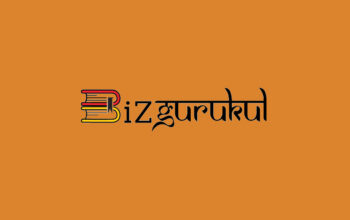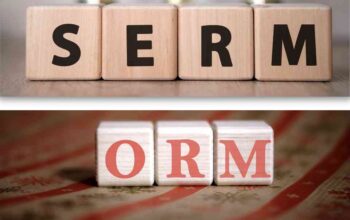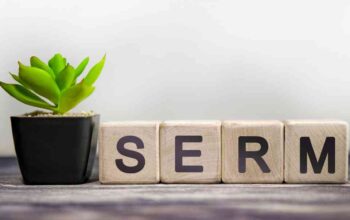In my telegram channel about marketing and entrepreneurship, subscribers sometimes ask questions, and recently the following was asked: “Why are large companies like Coca-Cola so actively advertised because everyone knows them anyway?”
There are many obvious answers: to buy more, maintain the image, recognition, and top-of-mind position, this is the fate of all major brands, multiplied by the desire of marketers and advertising agencies to demonstrate creativity and pump up their capitalization.
All this is true, but I propose to talk in more detail about brand awareness – this is what marketers most often mention in connection with advertising and promotion in general. In my opinion, everything is somewhat more complicated here, but awareness is not the best marketing indicator.
Disclaimer: Next, I’m talking about brand advertising, and this does not especially apply to product advertising, which consists of, for example, contextual results of Yandex. Direct or Google Ads. So this is not about product contextual advertising, which you might think of when you saw the word “advertising” in the headline, but more about display advertising.
But First, let’s Figure Out What A Brand Is
We are not interested in the definition from a textbook on the marketing difference between a brand and a trademark. Why consumers need a brand at all, and how they use it.
The brain prefers to save resources, and for it, a good enough but imperfect solution with a small cost is better than an ideal one, which uses a lot of valuable energy.
This particular feature of our brain causes the existence of the cognitive biases that you have probably heard about. I wrote about this in more detail in the articles:
The brain often prefers the familiar because it carries fewer risks and threats than the unfamiliar. The brand (and in a narrower sense – the trademark) makes it easier to remember and recognize the product. There are a lot of branding tools for this: naming, letter combinations, their sound and semantics, logos, brand names, colors, sounds, smells, shapes, packaging, etc.
Yes, in one or two product categories, we may have a favorite brand to which we are truly loyal, but we consume incomparably more categories and products every day. And by and large, we don’t care which brand to choose.
We prefer such familiar brands, but the real reason is risk aversion.
But Is It Only About Recognition?
When reading the article, we can flirt, but I am sure that the majority will choose Sberbank in a real situation because we know it, and the rest do not (the bankes Roscreditbank and Zvezdny do not exist, I just invented them and branded them)
Notice, I say familiar and unfamiliar; we know and don’t know. In marketing, this is called “brand knowledge” and is associated with the concepts of brand awareness or brand awareness (brand awareness) and its two components: recall (without a prompt) and recognition (with a prompt).
Marketers and brand managers are often guided by recognition as key indicators and cheerfully report on its growth (about the fall – not so cheerfully). I did that myself when I was working as a green marketing analyst at a well-known communications agency a long time ago and analyzed the results of panel studies.
And then we got to the link “advertising – brand awareness.”And many people believe that advertising is needed precisely for recognition—the roots of the question “Why does Coca-Cola need advertising?” – exactly in this bundle.
But It’s Not About Brand Awareness
Or not only in her.
Let’s repeat the experiment with banks, but bring it closer to reality because, in reality, the choice looks more like this:
I will not be mistaken if I assume that you know all these banks. In other words, the recognition of these three brands in a specific consumer segment (in this case, the readers of this article) is 100%, but you still have to make a choice, and you will make some. But why exactly like that?
Of course, you have an explanation, but most likely, you do not know. It seems that you know, but in reality, you do not. It is even possible that you are misleading yourself or explaining – this is called rationalization.
In reality, the choice was made by your brain (however, your brain is you), but it did it unnoticed by your consciousness, automatically. And slipped in an explanation
But Why Did The Brain Choose This Way?
At this moment, the marketers reading the article whisper the spell “top-of-mind,” and in Russian – which brands or two or three brands the consumer remembers first when he thinks about the product category. It is believed that the consumer is choosing a top-of-mind brand.
I took the approach of Byron Sharp, professor of marketing at the University of South Australia and author of How Brands Grow. What marketers don’t know. “
He introduces the concept of mental accessibility and claims that it is broader than brand awareness and its aspects – recall, recognition, and top-of-mind.
Mental Accessibility
Mental accessibility characterizes the consumer’s propensity to choose a brand in a buying situation.
It seems to be similar to top-of-mind, but mental accessibility is determined by the consumer’s knowledge of the brand and the established associations. The more there are, the more place the brand takes in a person’s memory, the easier it is for him to extract a brand from there in a purchase situation.
Please note – this is important: “in a buying situation,” not in a “marketing survey situation.” After all, top-of-mind is about research, not buying situations. With an induced answer, since the name of the product category is a hint – during research on the subject of top-of-mind, they name the product category to wait for what brands a person will name. In real life – being in a store in front of a shelf – a person operates not with a product category but with context (situation and tasks) and associations (what he knows, remembers, feels in connection with the brand).
The more various associations in the consumer’s head are associated with a specific brand, the higher the mental accessibility, the more likely the consumer will choose this particular brand.
Thus, the likelihood of a purchase depends not only and not so much on brand awareness, but on mental accessibility – in other words, how easily a brand appears in a person’s head as a preferred choice in a situation when he needs to make such a choice. In this case, the choice is determined by the context and the existing associations.
We do not choose unfamiliar brands. But we don’t choose a brand just because we know it.
Moreover, even the “more realistic” experiment with banks above is also far from reality. In a shopping situation, you will not be choosing between the brands that were slipped to you in the survey.
Everyone will have their own set of preferred (mentally accessible) brands:
Everything is even more complicated. After all, not only the product category (“bank”) is important, but also the context (“why do I need a bank in this situation”), and the context can be different:
- A bank to transfer money to anyone.
- Small business bank.
- Bank for credit cards.
- Bank for cash withdrawal anywhere.
- Bank for the deposit.
- Bank for maximum safety of money.
- Bank for a mortgage. Etc.
As a result, everyone has their associations, and the choices in each situation will also be different. And, most likely, it will be different for different contexts from one person. But this choice does not depend on recognition – it is already the highest in the consumer segment (among us).
With this approach, it becomes quite obvious why advertising for Coca-Cola and other well-known brands. They continue to be actively advertised, despite the highest and simultaneously the same levels of awareness among the target audience.








